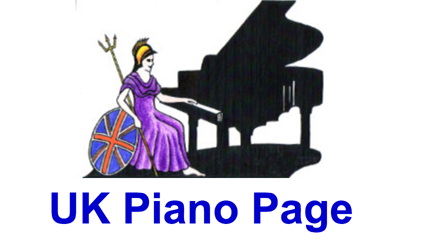As a design engineer by profession, I've been always interested in the latest ideas in pianos and have been intrigued by Stuart pianos who have two USPs - the agraffe on the bridge, and the fourth pedal. The agraffe on the bridge is said to ensure that the motion of the string in vibration always retains its direction parallel to the movement of the hammer. In conventional pianos, the agraffe by the pins on the frame naturally favour vibration parrallel to the hammer movement while the pin on the bridge favours perpendicular movement (ie 90 degrees from the parallel). It is claimed that the bridge pin causes the string to change the direction of vibration from pararllel to perpendicular and back again (ie round and round) which is where so much energy is lost. Keeping it in a single plane retains the maximum amounrt of energy and hence the string sounds for much longer. Well it certainly seems to make a pretty big difference in practice, and the Stuart piano is certainly a very fine piano in that regard. The case is, of course, a matter of taste, and it certainly isn't mine!
Hurstwood pianos have persuaded (I think) Steingraeber pianos to take the same idea on board, and they've developed a similar agraffe for their Phoenix range of pianos (photo below). What is different is that the down-bearing by the agraffe is taken up by the bridge as an equal and opposite force on the sound-board, so the sound-board is effectively being 'lifted' towards the strings by the combined down-bearing of all the strings. What effect this will have in the long term to the shape and life of the sound-board I think is probably unknown at this stage.
The Stuart's other USP, the fourth pedal, is in addition to the standard three (una corda, sostenuto, sustain) and brings the hammers closer to the strings like an upright, but of course their is still no take-up or slack in the mechanism (and shouldn't be either). As a pianist I found that this made the pedalling quite impossible, as you now have to manage three of the pedals with your left foot. Much better pianists than me have had similar difficulties with them and I think it was a good idea that just doesn't work. However, Steingraeber have taken this on board and they've combined the actions of the left-most two pedals, and have made a compound mechanism which shifts una corda first and then brings the hammers closer to the strings as a secondary action when the pedal is depressed further. This is much better and makes the piano more manageable, but the una corda pedal movement is rather too much for my liking.
The thing that did blow me away (much to my own surprise), is the Steingreaber which was fitted with a carbon fibre sound-board. They had a 2mm carbon fibre board sandwiched with something (spruce?) which was the most amazing piano I've played on in my life. The real talking point is the bass strings, which have superb base frequencies, but also have enormous number of harmonics too. Each bass string when struck is rather like having the sustain pedal on just for that string (try it - and you'll see what I mean). I'm not sure of the reason, but the bass frequencies perform better than that on a conventional sound-board - I think it's to do with the elasticity of the material (Young's modulus). Interestingly they said they made the first with a 4mm thick sound-board but that was just rubbish. They're now in the process of reducing it to 1.6mm and expect even better things - we'll see.
Well I thought everyone would be interested to hear what's going on in the public research labs (they're playing around with a 9'6" Bosendorfer and putting these agraffes on that too - I wasn't much impressed).
Finally, would I swap any of these pianos for my model D ? No. The one with the carbon fibre sound-board would be tempting but the balance is a bit awry because the bass is over-stated. The mechanism is all carbon fibre up to the hammers too, which certainly looks a little strange, and they're planning on a carbon-fibre frame, and possibly an all-in-one frame and sound-board later on. It's all interesting, and we'll have to see what happens. I suspect that Richard (the proprietor) is the driving force. At 82 (or thereabouts) he's suffering from heart complications at the moment, and I'm concerned that should he be unable to run the business any more, or even worse, die, then that may be the end of this interesting chapter. Incidentally I understand that Wayne Stuart is in his 60's even though I've not met him.



